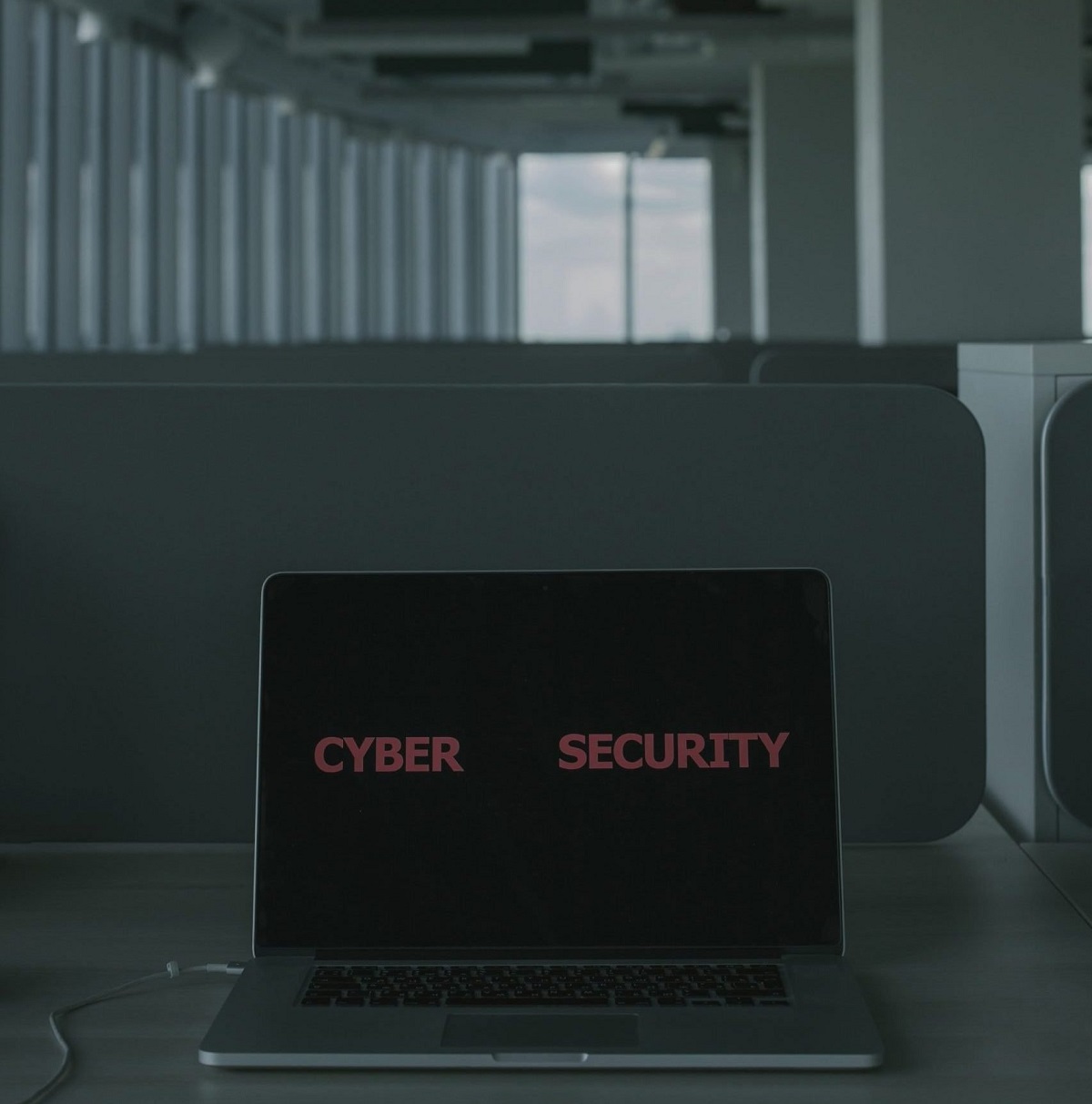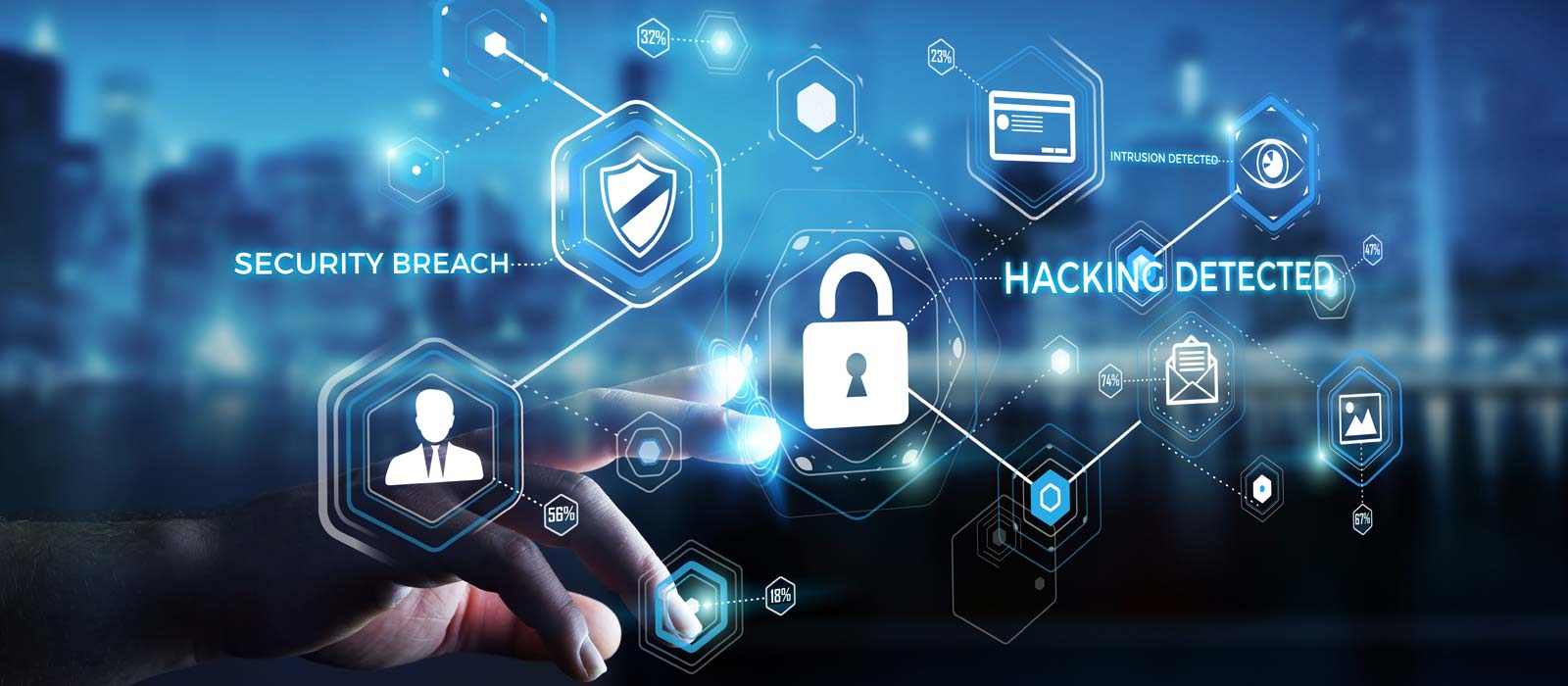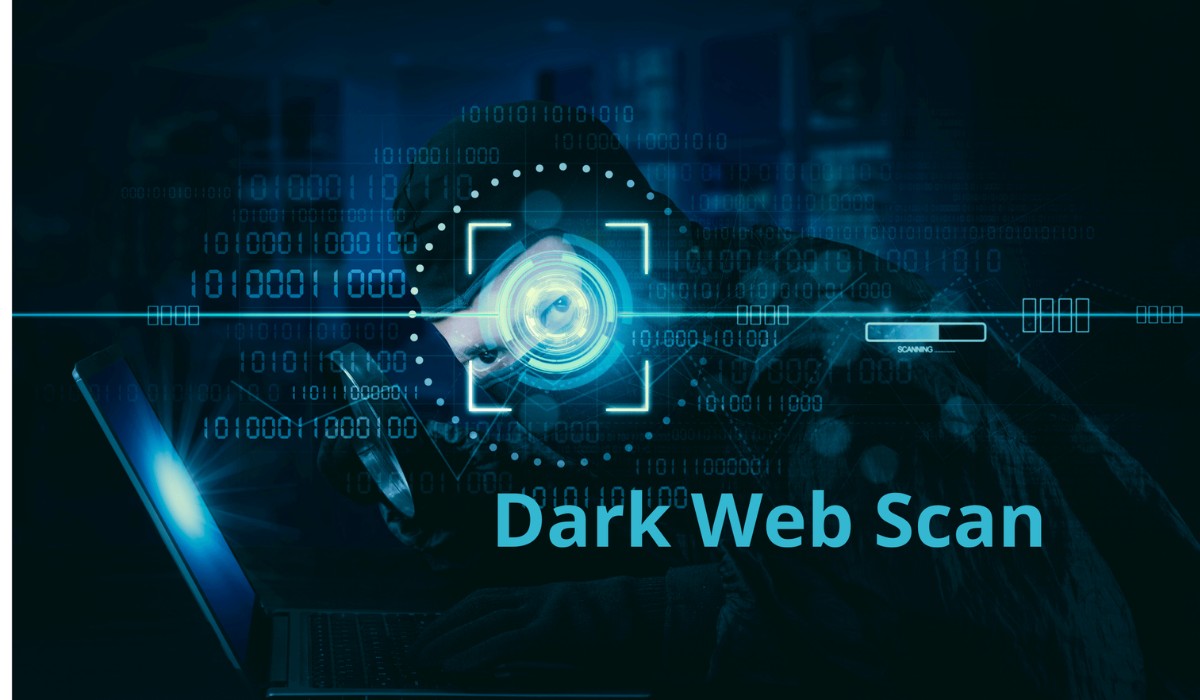Introduction
Welcome to the world of cybersecurity, where protecting sensitive information and defending against cyber threats is of utmost importance. With the ever-increasing sophistication of cyber attacks, organizations must constantly adapt and evolve their defense strategies. One key aspect of effective cybersecurity is measurement. But why is measurement so crucial in this field? In this article, we will explore the importance of measurement in cybersecurity and how it can help organizations improve their security posture.
Measurement is the foundation of any successful endeavor, and cybersecurity is no exception. By measuring various aspects of an organization’s security, such as vulnerability levels, incident response times, and the effectiveness of security controls, organizations can gain valuable insights into their current state of security. This information allows them to identify weaknesses, prioritize areas for improvement, and track progress over time.
One of the main reasons why measurement is important in cybersecurity is to provide a quantifiable basis for decision-making. Without measurements, decisions related to cybersecurity would be based on guesswork and assumptions, which can have serious consequences. By collecting and analyzing relevant data, organizations can make informed decisions about resource allocation, risk management, and security investments.
Furthermore, measurement helps to establish a benchmark for comparison. By consistently measuring and monitoring security metrics, organizations can establish a baseline to gauge their performance against industry standards or internal goals. This provides a basis for evaluating the effectiveness of security controls and identifying areas where improvements are needed.
Another benefit of measurement in cybersecurity is the ability to demonstrate the value of security investments. Executives and stakeholders often require evidence of the return on investment (ROI) for cybersecurity initiatives. By measuring the impact of security measures, such as reducing the number of security incidents or minimizing the financial losses associated with a breach, organizations can provide tangible evidence of the value of their security program.
Additionally, measurement enables organizations to detect and respond to security incidents more efficiently. By monitoring key metrics, such as the time it takes to detect and respond to an incident, organizations can identify bottlenecks and implement measures to improve their incident response capabilities. This can ultimately minimize the impact of a security breach and reduce downtime.
Overall, measurement plays a vital role in cybersecurity by providing organizations with the necessary information to assess their security posture, make informed decisions, and continuously improve their defenses. In the following sections, we will explore the common challenges in measuring cybersecurity, the measurement process, and how organizations can improve their cybersecurity posture through measurement.
The Importance of Measurement in Cybersecurity
Measurement is a fundamental aspect of effective cybersecurity. It provides organizations with the ability to assess their security posture, make informed decisions, and continuously improve their defenses. Without measurement, organizations would lack the necessary insights to identify weaknesses, prioritize areas for improvement, and track progress over time.
One of the main reasons why measurement is important in cybersecurity is its role in providing a quantifiable basis for decision-making. By collecting and analyzing relevant data, organizations can make informed decisions about resource allocation, risk management, and security investments. This helps to ensure that limited resources are allocated to areas that have the highest risk and impact on the organization’s security.
The ability to establish a benchmark for comparison is another key benefit of measurement in cybersecurity. By consistently measuring and monitoring security metrics, organizations can establish a baseline to gauge their performance against industry standards or internal goals. This enables them to evaluate the effectiveness of security controls and identify areas where improvements are needed.
Moreover, measurement is essential for demonstrating the value of security investments. Executives and stakeholders often require evidence of the return on investment (ROI) for cybersecurity initiatives. By measuring the impact of security measures, such as reducing the number of security incidents or minimizing financial losses associated with a breach, organizations can provide tangible evidence of the value of their security program.
Measurement also plays a critical role in incident response and detection. By monitoring key metrics, such as the time it takes to detect and respond to an incident, organizations can identify bottlenecks and implement measures to improve their incident response capabilities. This allows them to minimize the impact of a security breach and reduce downtime.
In addition to decision-making and incident response, measurement contributes to the overall improvement of cybersecurity defenses. By analyzing measurement data, organizations can identify patterns and trends, enabling them to proactively address emerging threats and vulnerabilities. This iterative process of measuring, analyzing, and improving ensures that cybersecurity strategies remain effective and up-to-date.
Overall, measurement is both a strategic and tactical asset in the field of cybersecurity. It provides organizations with the necessary information to assess their security posture, make informed decisions, and continuously improve their defenses. By integrating measurement practices into their cybersecurity programs, organizations can enhance their ability to protect sensitive information, defend against cyber threats, and safeguard their digital assets.
Common Challenges in Measuring Cybersecurity
While measurement is critical in cybersecurity, it is not without its challenges. Organizations often face various obstacles that can hinder their ability to effectively measure their security posture. Understanding and addressing these challenges is crucial for obtaining accurate and reliable measurements. Here are some common challenges in measuring cybersecurity:
1. Lack of standardized metrics: The absence of standardized metrics makes it difficult to compare and benchmark security performance across organizations. Each industry, organization, and even cybersecurity professional may have their own set of metrics, resulting in inconsistencies and difficulties in assessing the overall effectiveness of security measures.
2. Complexity of cybersecurity landscape: The fast-paced and ever-evolving nature of the cybersecurity landscape poses challenges in measurement. New threats and attack techniques constantly emerge, making it challenging to keep up and measure the effectiveness of existing security controls against these emerging threats.
3. Difficulty in quantifying qualitative aspects: Cybersecurity involves both qualitative and quantitative aspects. While quantitative measurements, such as the number of incidents or vulnerabilities, can be relatively straightforward, quantifying qualitative aspects, such as the level of risk or the effectiveness of security awareness training, can be more challenging.
4. Data quality and availability: The quality and availability of data can pose significant challenges in measurement. Inaccurate or incomplete data can lead to skewed results and unreliable measurements. Additionally, organizations may face difficulties in accessing the necessary data due to privacy concerns or limited resources.
5. Lack of expertise and resources: Measuring cybersecurity effectively requires expertise and resources. Organizations may struggle to find individuals with the necessary knowledge and skills to design and implement measurement programs. Limited budgets and competing priorities can also hinder the allocation of resources to measurement initiatives.
6. Resistance to change: Implementing measurement practices may face resistance from stakeholders who are skeptical about the value and benefits of measurement. Resistance can stem from concerns about the additional workload, perceived lack of relevance or understanding of measurement, or fear of exposing weaknesses or vulnerabilities.
Addressing these challenges requires a proactive and strategic approach. Organizations should collaborate with industry peers and experts to develop standardized metrics, leverage technology and automation to improve data quality and accessibility, invest in training and development to build measurement expertise, and communicate the importance and benefits of measurement to gain stakeholder buy-in.
Overcoming these challenges will enable organizations to obtain accurate, reliable measurements of their security posture, enabling them to make informed decisions, identify areas for improvement, and enhance their overall cybersecurity defenses.
The Measurement Process in Cybersecurity
Measuring cybersecurity involves a systematic process that allows organizations to assess their security posture, track progress, and make data-driven decisions. The measurement process consists of several key steps, each playing a critical role in obtaining accurate and meaningful measurements. Here is an overview of the measurement process in cybersecurity:
1. Identify What to Measure: The first step in the measurement process is to identify what aspects of cybersecurity should be measured. This involves determining the relevant security objectives, critical assets, and key performance indicators (KPIs) that align with the organization’s overall security strategy. Common areas to measure may include vulnerability levels, incident response times, employee training effectiveness, and security control effectiveness.
2. Select the Right Metrics: Once the areas to measure are identified, the next step is to select the appropriate metrics. It is essential to choose metrics that are relevant, meaningful, and aligned with the organization’s security goals. For example, instead of simply measuring the number of security incidents, organizations may consider metrics such as the average time to detect and respond to incidents or the cost per incident.
3. Gather Data for Measurement: After selecting the metrics, data needs to be collected to measure them. This involves leveraging various sources such as security logs, incident reports, vulnerability assessments, and employee surveys. Data collection should be consistent and adhere to established data governance and privacy policies to ensure the accuracy and integrity of the measurements.
4. Analyze and Interpret the Results: Once the data is collected, it needs to be analyzed and interpreted to derive meaningful insights. This involves applying statistical techniques, data visualization, and trend analysis to identify patterns, trends, and potential areas for improvement. Data should be reviewed against established benchmarks, industry best practices, and internal goals to gain a clear understanding of the organization’s security posture.
5. Make Informed Decisions Based on Measurements: With the analysis completed, organizations can make data-driven decisions to improve their cybersecurity defenses. The insights gained from the measurements can help prioritize areas for improvement, allocate resources effectively, and evaluate the effectiveness of security controls and investments. These decisions should be regularly reviewed and adjusted based on new measurement data and changing threat landscapes.
6. Continuously Improve Through Measurement: Measurement is an iterative process that requires constant evaluation and improvement. By regularly measuring, analyzing, and making informed decisions, organizations can continuously enhance their security posture. This includes monitoring the effectiveness of implemented improvements, reassessing metrics based on changing threats and objectives, and adjusting measurement processes as needed.
By following these steps, organizations can establish a robust measurement process in cybersecurity. This process enables them to gain valuable insights, drive improvements, and effectively manage their security risks. It also helps organizations demonstrate the value of their security initiatives to stakeholders and maintain a proactive and adaptive approach to cybersecurity.
Identifying What to Measure
Identifying what to measure is a crucial step in the measurement process in cybersecurity. It involves determining the key areas, objectives, and performance indicators that should be measured to assess an organization’s security posture effectively. By identifying the right metrics, organizations can focus on the most critical aspects of cybersecurity and obtain meaningful insights. Here are some considerations for identifying what to measure in cybersecurity:
1. Security Objectives: Start by aligning the measurement efforts with the organization’s overall security objectives. These objectives may include protecting sensitive data, preventing unauthorized access, ensuring compliance with regulations, or minimizing the impact of security incidents. By understanding the goals of the security program, it becomes easier to identify the specific areas that need to be measured.
2. Critical Assets: Identify the critical assets that require protection. These assets could be intellectual property, customer data, financial information, or any other sensitive information that, if compromised, could significantly impact the organization. Measure the security of these assets to assess the effectiveness of existing security controls and prioritize future investments.
3. Risk Assessment: Conduct a comprehensive risk assessment to identify the potential threats and vulnerabilities that the organization faces. This helps in determining the areas that require measurement and mitigation. Areas with higher risk levels should be given higher priority for measurement, as they pose a greater threat to the organization’s security.
4. Regulatory Requirements: Consider any regulatory requirements that the organization must comply with. These could include industry-specific regulations such as the Payment Card Industry Data Security Standard (PCI DSS) or the General Data Protection Regulation (GDPR). Measure the organization’s compliance with these regulations to ensure that suitable security controls are in place.
5. Industry Standards and Best Practices: Keep abreast of industry standards, frameworks, and best practices that pertain to cybersecurity. Common examples include the National Institute of Standards and Technology (NIST) Cybersecurity Framework, ISO 27001, or the CIS Controls. Utilize these resources to identify measurement areas and metrics that are widely recognized and accepted within the industry.
6. Incident Trends: Analyze past security incidents within the organization to identify recurring patterns and emerging threats. Measure the effectiveness of incident response processes and the time it takes to detect and respond to incidents. This information can help identify weaknesses and guide improvements in incident response capabilities.
7. Employee Training and Awareness: Don’t overlook the human aspect of cybersecurity. Measure the effectiveness of employee training and awareness programs to ensure that personnel are well-informed about security policies, best practices, and potential risks. Consider metrics such as completion rates of security training, phishing simulation results, or incidents caused by human error.
It is important to note that the identified metrics should be relevant, actionable, and aligned with the organization’s objectives. While it is tempting to measure numerous aspects of cybersecurity, it is essential to focus on the metrics that provide the most valuable and actionable insights. Regular review and adjustment of these metrics are necessary to ensure their continued relevance in the ever-changing cybersecurity landscape.
By identifying what to measure, organizations can prioritize their measurement efforts and obtain meaningful insights into their security posture. This enables them to make informed decisions, allocate resources effectively, and continuously improve their cybersecurity defenses.
Selecting the Right Metrics
Once the areas to measure in cybersecurity have been identified, the next step is to select the appropriate metrics. Choosing the right metrics is crucial to ensure that the measurements provide relevant, meaningful, and actionable insights. Here are some key considerations for selecting the right metrics in cybersecurity:
1. Alignment with Objectives: Metrics should directly align with the organization’s cybersecurity and business objectives. Each metric should contribute to assessing the effectiveness of security controls, mitigating risks, or achieving specific goals. For example, if the objective is to reduce the impact of a security incident, relevant metrics could include the average incident response time or the percentage of incidents resolved within a defined timeframe.
2. Relevance: Metrics should measure aspects of cybersecurity that are relevant to the organization’s industry, threat landscape, and critical assets. Focus on quantifying the areas that have the potential to cause the most significant impact if compromised. For instance, if customer data is a critical asset, metrics that measure the security of customer data, such as the number of data breaches or the percentage of data encrypted, would be highly relevant.
3. Actionability: Metrics selected should be actionable, meaning that they provide insights that can drive improvements in cybersecurity. Choose metrics that can be influenced or changed by the organization’s actions and investments. For example, a metric that measures the percentage of employees who have completed security training is actionable because it can be improved through initiatives aimed at increasing training completion rates.
4. Measurability: Ensure that the metrics can be measured accurately and consistently. Establish clear definitions and measurement methodologies for each metric to maintain consistency and reliability. Consider the availability and quality of data required to measure the selected metrics, as obtaining accurate and timely data is essential for meaningful measurement.
5. Balanced Perspective: Select metrics that provide a balanced view of cybersecurity. Avoid relying on a single metric or a narrow set of metrics that may provide an incomplete picture. Consider a mix of leading indicators (predictive metrics) and lagging indicators (reflective metrics) to provide a more comprehensive understanding of the organization’s security posture.
6. Benchmarking Capabilities: Consider whether the selected metrics have industry benchmarks or established standards, as this enables comparisons against peers or established performance levels. Benchmarking provides valuable context and helps gauge the effectiveness of security measures compared to industry best practices.
7. Relevance to Stakeholders: Consider the metrics that are relevant and meaningful to different stakeholder groups, such as executives, IT teams, or auditors. Tailor the selection of metrics to address the specific concerns and information needs of each stakeholder group. This helps to ensure that the measurements resonate with stakeholders and provide the necessary insights to support their decision-making processes.
8. Evolution and Adaptation: Regularly review and evolve the chosen metrics to remain relevant in the dynamic cybersecurity landscape. As threats evolve and business priorities change, the selected metrics may need to be adjusted or replaced. Continuously assess the effectiveness of the metrics and adapt as needed to ensure that they continue to provide meaningful insights.
By carefully selecting the right metrics, organizations can measure the most crucial aspects of their cybersecurity posture. These metrics provide relevant, actionable insights that drive improvements, inform decision-making, and enhance overall cybersecurity defenses.
Gathering Data for Measurement
Gathering data is a critical step in the measurement process in cybersecurity. To obtain accurate and reliable measurements, organizations must collect relevant data from various sources. This data provides the necessary information to assess the organization’s security posture, track progress, and make informed decisions. Here are some key considerations for gathering data for measurement in cybersecurity:
1. Define Data Requirements: Start by clearly defining the data requirements for each metric identified during the selection process. Specify the type of data needed, the timeframe for data collection, and any specific data attributes or characteristics that are necessary for accurate measurement. This ensures that the data gathering process is focused and aligned with the measurement objectives.
2. Identify Data Sources: Identify the sources from which the required data can be obtained. Common sources of data in cybersecurity may include security logs, incident reports, vulnerability scans, network traffic analysis, user access logs, and security awareness training records. Consider both internal data sources, such as security systems and tools used within the organization, as well as external sources, such as threat intelligence feeds or industry reports.
3. Collect Data Consistently: Consistency in data collection is crucial for ensuring accurate and reliable measurements. Establish clear guidelines and procedures for data collection to ensure that the process is consistent across different sources and timeframes. This includes specifying the data collection methodologies, ensuring data integrity and quality, and setting standards for data entry and formatting.
4. Automate Data Collection: Whenever possible, leverage automation tools and technologies to streamline the data collection process. Automation not only saves time and effort but also reduces the risk of human error. Automated data collection also facilitates regular and frequent data updates, enabling organizations to track their security posture in near real-time and detect any anomalies or deviations promptly.
5. Ensure Data Privacy and Security: Data collection in cybersecurity must prioritize the privacy and security of sensitive information. Implement appropriate data protection measures, including encryption, access controls, and secure storage, to prevent unauthorized access or misuse of the collected data. Comply with relevant privacy laws and regulations to protect the privacy rights of individuals whose data is collected.
6. Collaborate with Stakeholders: Engage with different stakeholders to gather data effectively. Collaborate with IT teams, security analysts, system administrators, and other relevant personnel to access the necessary data. Build relationships with internal teams and external partners to facilitate data sharing and obtain data from external sources, such as threat intelligence providers or industry peers.
7. Regularly Validate and Verify Data: As part of the data gathering process, regularly validate and verify the accuracy and reliability of the collected data. This can include cross-referencing data from different sources, conducting data integrity checks, or performing sample audits. Identifying and addressing data discrepancies or anomalies ensures that the measurements are based on trustworthy and accurate data.
8. Document Data Collection Procedures: Document the data collection procedures, including the sources, methodologies, and any assumptions or limitations associated with each data set. This documentation provides transparency and enables others to understand and replicate the data gathering process. It also helps in maintaining data consistency and allows for future reference and review.
By following these considerations, organizations can gather data effectively for measurement in cybersecurity. Accurate and reliable data enables them to assess their security posture, track progress, and make data-driven decisions to enhance their cybersecurity defenses.
Analyzing and Interpreting the Results
Once data has been gathered and measurements have been obtained in cybersecurity, the next crucial step is to analyze and interpret the results. Simply collecting data is not enough – organizations must derive meaningful insights from the measurements to make informed decisions and drive improvements. Here are some key considerations for analyzing and interpreting the results in cybersecurity:
1. Use Statistical Techniques: Apply statistical techniques to analyze the measurements and identify patterns, trends, and correlations. Common statistical methods used in cybersecurity analysis include mean, median, standard deviation, correlation analysis, and regression analysis. These techniques provide a quantitative basis for understanding the relationships between different variables and identifying areas that may require attention.
2. Data Visualization: Visualize the measurement results using graphs, charts, and other visual representations. Data visualization techniques help in presenting complex data in a clear and understandable way. Effective visualizations can simplify the interpretation of the results and highlight key insights and trends that may not be immediately apparent in raw data.
3. Compare Against Benchmarks: Benchmark the measurement results against established industry benchmarks, best practices, or internal goals. By comparing the results against benchmarks, organizations can assess their performance relative to others in the industry and identify areas for improvement. Benchmarking helps in providing context to the measurements and evaluating the effectiveness of current security controls.
4. Trend Analysis: Analyze measurement results over time to identify long-term trends and changes. Compare data collected at different intervals to understand the direction and pace of progress. Trend analysis helps to assess the effectiveness of implemented improvements, identify emerging issues, and track the organization’s continuous improvement in cybersecurity defenses.
5. Root Cause Analysis: Conduct root cause analysis to understand the underlying factors contributing to the measurement results. Identify the causes of security incidents, vulnerabilities, or other negative outcomes. By understanding the root causes, organizations can address the underlying issues and implement targeted solutions to improve their security posture.
6. Contextualize the Results: Interpret the measurement results in the context of the organization’s unique circumstances, objectives, and risk appetite. Consider factors such as the industry, organizational structure, business priorities, and regulatory requirements. This contextualization ensures that the interpretation of the results aligns with the specific needs and constraints of the organization.
7. Engage Stakeholders: Involve relevant stakeholders, such as IT teams, security professionals, executives, and business units, in the analysis and interpretation of the results. Collaboration and discussion with stakeholders can provide different perspectives, enhance understanding, and help in identifying actionable insights. It also fosters a sense of ownership and accountability in addressing the identified issues.
8. Continuously Refine Interpretation: The interpretation of measurement results should be an iterative process. Continuously refine and update the interpretation based on new information, emerging threats, and changing organizational priorities. Regularly review measurement results to ensure they are still aligned with the organization’s evolving needs and objectives.
By following these considerations, organizations can analyze and interpret the results of their cybersecurity measurements effectively. This analysis provides valuable insights that inform decision-making, drive improvements, and enhance overall cybersecurity defenses.
Making Informed Decisions Based on Measurements
Measurement is only valuable in cybersecurity if it leads to informed decision-making. Organizations must utilize the insights gained from measurements to drive improvements, allocate resources effectively, and enhance their cybersecurity defenses. Here are some key considerations for making informed decisions based on measurements:
1. Prioritize Areas for Improvement: Utilize the measurements to identify areas of weakness or vulnerability in the organization’s security posture. Prioritize these areas based on the severity of the risks and the potential impact on the business. By focusing resources on the most critical areas, organizations can allocate their efforts and investments where they will have the greatest impact on improving security.
2. Allocate Resources Effectively: Use measurements to guide the allocation of resources in cybersecurity. Identify areas that require additional investments, such as security controls, staff training, or technology upgrades. Align the resource allocation decisions with the insights gained from the measurements to ensure that resources are allocated where they will have the most significant positive impact on the organization’s security.
3. Evaluate the Effectiveness of Security Controls: Assess the effectiveness of existing security controls based on the measurements. Identify controls that are not performing as expected and may require adjustment or replacement. By measuring the outcomes of the security controls, organizations can make data-driven decisions on improving or replacing them to better mitigate risks and protect critical assets.
4. Enhance Incident Response Capabilities: Utilize measurement data to improve incident response capabilities. Analyze metrics related to incident detection and response times to identify bottlenecks or areas for improvement. Use this information to refine incident response processes, train personnel, or invest in technologies that can enhance the organization’s ability to detect, respond to, and mitigate security incidents efficiently.
5. Assess the Impact of Security Investments: Measure the impact of security investments and initiatives using relevant metrics. Evaluate the return on investment (ROI) of implemented security measures, such as reducing the number of security incidents, minimizing potential financial losses from breaches, or improving compliance with regulatory requirements. Use this information to demonstrate the value of security investments and make informed decisions on future investments.
6. Enhance Risk Management: Apply measurements to inform risk management decisions. Measure the effectiveness of risk mitigation strategies, track risk levels over time, and identify emerging risks through trend analysis. Apply a data-driven approach to prioritize risks, implement appropriate controls, and ensure that risk management efforts align with the organization’s business objectives.
7. Communicate Findings to Stakeholders: Effectively communicate the findings and insights derived from measurements to stakeholders. Share measurement results, trends, and recommendations with executives, business units, IT teams, and other relevant stakeholders. Clear and concise communication helps stakeholders understand the organization’s security posture, the rationale behind decision-making, and encourages their engagement and support in implementing necessary security improvements.
8. Continuously Monitor and Adjust: Measurements should be viewed as an ongoing process. Continuously monitor the metrics, reassess the measurements’ relevance and effectiveness, and adjust the decision-making process accordingly. Measurement results should be regularly reviewed to ensure that decisions remain aligned with the organization’s evolving security needs and the changing threat landscape.
By making informed decisions based on measurements, organizations can effectively utilize the insights gained from the data. These decisions drive improvements, enhance risk management, and strengthen overall cybersecurity defenses.
Improving Cybersecurity through Measurement
Measurement plays a pivotal role in improving cybersecurity. By collecting data, analyzing metrics, and making informed decisions based on those measurements, organizations can enhance their overall security posture. Here are some ways in which measurement improves cybersecurity:
1. Identify Weaknesses and Prioritize Improvements: Measurement enables organizations to identify weaknesses and vulnerabilities in their security infrastructure. By measuring indicators such as vulnerability levels, incident response times, or employee training effectiveness, organizations can pinpoint areas that require attention. This allows them to prioritize improvements and allocate resources effectively, focusing on the most critical aspects of security.
2. Measure the Effectiveness of Controls: Measurements help assess the effectiveness of security controls and technologies. By quantifying the outcomes and impact of security measures, organizations can identify controls that are performing well as intended and those that require optimization or replacement. This allows for better resource allocation and decision-making, ensuring that investments align with the overall security strategy.
3. Monitor Compliance and Regulatory Requirements: Measurement assists organizations in evaluating their compliance with regulatory requirements. By monitoring relevant metrics, such as adherence to security standards or incident response times, organizations can ensure they meet the necessary security and privacy regulations. Regular measurement and tracking of compliance metrics help identify gaps and prompt remediation measures to avoid potential penalties.
4. Inform Risk Management: Measurement provides valuable data for risk management. By continuously measuring and analyzing security metrics, organizations gain insights into their risk exposure and can make informed decisions on risk mitigation strategies. Measurement helps detect emerging risks, evaluate the effectiveness of existing risk controls, and support the ongoing management of cybersecurity risks.
5. Enhance Incident Response and Detection: Measurements improve incident response and detection capabilities. By analyzing metrics related to incident response times, detection rates, and the effectiveness of incident handling processes, organizations can identify bottlenecks and areas for improvement. This helps optimize incident response procedures, allocate resources efficiently, and reduce the impact and potential damage caused by security incidents.
6. Drive Continuous Improvement: Measurement supports a culture of continuous improvement in cybersecurity. By regularly measuring, analyzing, and interpreting results, organizations can identify trends and patterns that inform their security enhancement efforts. Measurement helps track progress over time, adapt strategies to evolving threats, and promote a proactive approach to cybersecurity.
7. Justify Investments and Demonstrate ROI: Measurement enables organizations to demonstrate the value and return on investment (ROI) of their security initiatives. By measuring and quantifying the impact of security investments, such as reduced incident frequency, minimized financial losses, or improved compliance, organizations can prove the effectiveness and business value of their security programs. This helps secure executive buy-in and additional resources for future investments.
8. Foster a Data-Driven Security Culture: Measurement encourages a data-driven approach to security decision-making. By basing decisions on objective measurements rather than guesswork or assumptions, organizations develop a culture of evidence-based decision-making. This leads to more effective resource allocation, improved risk management, and better overall cybersecurity outcomes.
Measurement is an essential component of improving cybersecurity. By leveraging relevant metrics, analyzing results, and making informed decisions, organizations can enhance their security posture, drive continuous improvement, and effectively mitigate cyber risks.
Conclusion
Measurement is a critical element in the field of cybersecurity. It provides organizations with valuable insights into their security posture, enables informed decision-making, and drives continuous improvement. By identifying what to measure, selecting the right metrics, gathering accurate data, and analyzing the results, organizations can enhance their overall cybersecurity defenses.
The importance of measurement in cybersecurity cannot be overstated. It allows organizations to assess their security effectiveness, identify weaknesses and vulnerabilities, and prioritize areas for improvement. Through measurement, organizations can allocate resources effectively, evaluate the impact of security investments, and demonstrate the value of their security programs to stakeholders.
However, measurement in cybersecurity is not without its challenges. Organizations must navigate complexities such as the evolving threat landscape, data quality and availability issues, and the difficulty in quantifying qualitative aspects of security. Addressing these challenges requires collaboration, expertise, and a commitment to continuously refining measurement practices.
By making informed decisions based on measurements, organizations can optimize their cybersecurity efforts. They can identify and address security gaps, enhance incident response capabilities, and improve risk management strategies. Measurement fosters a data-driven security culture that supports ongoing monitoring, adaptation, and proactive defense against emerging threats.
In conclusion, measurement is not just a means to track security performance; it is a key driver in improving cybersecurity. Organizations that embrace measurement as a strategic practice gain valuable insights into their security posture, make data-driven decisions, and continuously enhance their defenses. By adopting a systematic approach to measurement and leveraging the right metrics, organizations can tackle cybersecurity challenges effectively and stay resilient in the face of evolving threats.

























